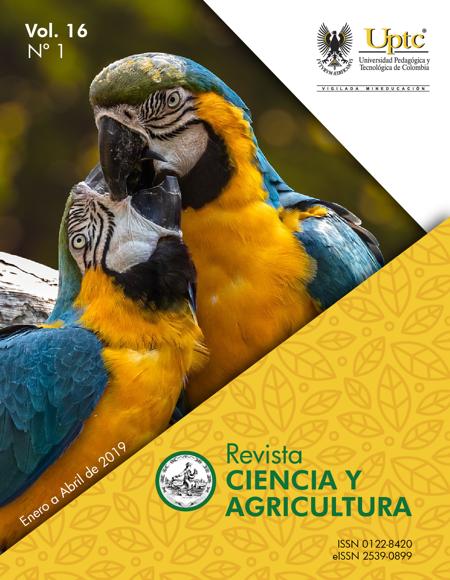Evaluation of three alternatives for the control of varroasis (Varroa destructor) in ecuadorian apiaries

Abstract
In Chimborazo, Ecuador, three treatments were evaluated for the control of Varroasis (Varroa destructor) in bees, T1: Formic Acid (at 85%), T2: Oxalic Acid (at 10% in sugar syrup), T3: Thymol (at 99% diluted in olive oil), and a control treatment (T0), with a completely randomized design and four replicas (hives) for each treatment, during 30 days of application of the treatments on Langstroth hives. An initial diagnostic study was carried out to determine the level of varroasis infestation and select the 16 hives with the same level of infestation, then the treatments were applied, so the formic acid was applied twice, once every 15 days with a sprayer, the acid oxalic was applied four times, one every 4 days in sugar solution, thymol was applied twice, once every 8 days with spray and diluted in olive oil. A better efficacy (95.1%) was determined in the control of varroasis with formic acid, without affecting the population of bees, both by the mode of selective action of the product in the reproductive and foretic phase of the varroas, as by its long period of action, in addition to its low cost (8.2 dollars/hive), so it is recommended to use this product for the control of Varroa destructor in Apis mellifera.
Keywords
bees, formic acid, hive, oxalic acid, thymol, varroasis
References
Ball, B., & Alderson, P. (2008). Immunolocalization of deformed wing virus particles within the mite Varroa destructor. Journal of Ge¬neral Virology, 89, 1685-1689. DOI: https://doi.org/10.1099/vir.0.83223-0.
Bulacio, N.; Basualdo, M. y Eguaras, M. (2010). Actividad Varroocida del timol en colonias de Apis mellifera L. de la provincia de Santa Fe. Revista de la Sociedad Entomológica Argentina, 12 (1), 1668-3498.
Cabrera, J. (2007). Perspectivas de la Apiterapia en el Ecuador. Quito, Ecuador: Carisma.
De Jong, D. (1997). Mites: Varroa and other parasites of brood. Honey bee pests, predators and diseases. Ithaca New York: Root Publishing.
Eguaras, M. (2003). El ácido fórmico como agente de control de Varroa Destructor en Argentina. Buenos Aires, Argentina: Printerline.
Eguaras, M., Cora, D., Sosa, A., & Ruffinengo, S. (2000). Control de Varroa jacobsoni mediante aplicaciones repetidas de ácido fórmico líquido. Revista Argentina de Producción Animal, 20 (326), 1-9.
Espinosa, L., & Guzmán, E. (2007). Eficacia de dos acaricidas naturales, ácido fórmico y timol, para el control del ácaro Varroa destructor de las abejas (Apis mellifera L.) en Villa Guerrero, Estado de México, México. Veterinaria México, 38 (1), 9-19.
Jordán, B., & Lalangui, M. (2016). Apicultura en Ecuador. Universidad Técnica de Machala, Ecuador.
Llorete, J., Higes, M., & Suarez, M. (1996). Tratamientos con productos naturales contra Varroa jacobsoni. Estudio comparativo de varios compuestos. (Timol, Mentol, Alcanfor). II Congreso de la Sociedad Española de Agricultura Ecológica, Pamplona-Iruña
Milani, N. (1999). The resistance of Varroa jacobsoni Oud. to acaricides. Apidologie, 30, 229-234. DOI: https://doi.org/10.1051/apido:19990211.
Nanetti, A. (2007). Uso de ácido oxálico y otros productos de origen natural para el control de Varroa, Pros y Contras. Revista Agro Sur Chile, 3 (1), 48-50. DOI: https://doi.org/10.4206/agrosur.2007.v35n1-18.
Ruíz, A., Ramírez, E., Maldonado, E., Palafox, J., Ochoa, E., & López. R. (2012). Incidencia y nivel de infestación por varroasis en abejas (Apis mellifera) en el laboratorio de identificación y diagnóstico apícola de 2002 a 2006. Revista Chapingo Serie Ciencias Forestales y del Ambiente, 18 (2), 175-182. DOI: https://doi.org/10.5154/r.rchscfa.2011.03.023.
Ruíz, J. (2012). Control de la varroa con timol. V Jornadas Técnicas de Apicultura de Córdoba, Argentina.
Sánchez, C. (2003). Crianza y Producción de Abejas. Buenos Aires, Argentina: Servilibros
Silva, A. (2006). Evaluación del ácido oxálico sobre Varroa destructor Anderson y Trueman (Acari: Mesostigmata), aplicado en otoño sobre colonias de Apis Mellifera L (Hym: Apidae). Apidologie, 62, 145-159.
Stanghellini, R. (2004). Evaluation of selected biopesticides for the late fall control of Varroa mites in a northern temperate climate. American Bee Journal, 144, 475-480.
